Widmore is an area of Greater London, within the London Borough of Bromley. It is located south-east of Sundridge, west of Bickley, north of Bromley Common, and east of Bromley.
Widmore is an area of Greater London, within the London Borough of Bromley. It is located south-east of Sundridge, west of Bickley, north of Bromley Common, and east of Bromley.
Widmore derives from 'Withmere', a placename first mentioned in 1226 and thought to mean 'pool where the withy grows'. [1] [2] Wythemere, Widmere and Wigmore were variant spellings. [2]
The area remained a tiny hamlet, save for a brick-works, as late as the 19th century. [1] The pool that gave the area its name was still extant in 1819,however it was later built over; it was located just west of Lewes Road and to the south the Oak pub. [2] [3] The local landowner John Wells sold part of the land lying north of Widmore Road to housing developers in 1845, and by the late 1850s the area contained some 40 large properties, plus a number of smaller cottages. [1] Further building work occurred in this area in 1888. [1] The lands south of Widmore Road were historically part of Bromley Palace, but were built over with further housing in the 1920s-30s. [1] Widmore today has merged completely with the surrounding suburbs and is often seen as part of Bickley. [1]
The area contains a small row of shops at Widmore Green (a rather small triangle of grass), at the junction of Widmore Road and Plaistow Lane. There is one pub here (The Oak) and four more located very close to each other along Palace Road/North Road/Freelands Road (The Red Lion, The White Horse, The Anglesey Arms, Freelands Tavern, and the Crown and Anchor). [4]

Penge is a suburb of South East London, England, now in the London Borough of Bromley, 3.5 miles (5.6 km) west of Bromley, 3.7 miles (6.0 km) north east of Croydon and 7.1 miles (11.4 km) south east of Charing Cross.
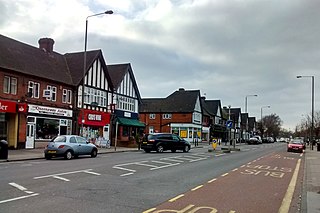
Petts Wood is a town in south-east London, England, previously located in the historic county of Kent. It lies south of Chislehurst, west of St Paul's Cray and Poverest, north of Orpington and Crofton, and east of Southborough and Bromley Common. The area forms part of the London Borough of Bromley local authority district in the ceremonial county of Greater London.
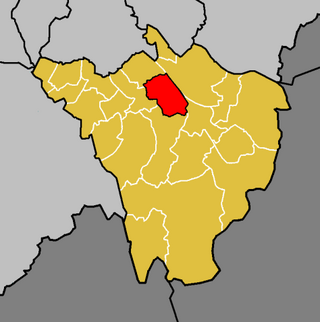
Bickley is a district and a local government electoral ward in South East London, within the London Borough of Bromley. It is located 10.4 miles (16.7 km) south east of Charing Cross, bordering Elmstead to the north, Chislehurst to the north-east and east, Petts Wood to the south-east, Southborough to the south, Bromley to the south-west and west and Widmore to the north-west. Until 1965 it was in the historic county of Kent.
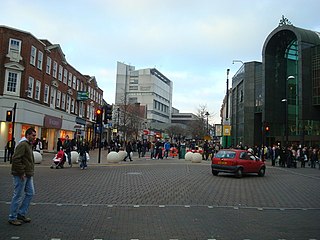
Bromley is a large town in Greater London, England, within the London Borough of Bromley. It is 9.4 miles (15.1 km) south-east of Charing Cross, and had an estimated population of 87,889 as of 2011.

Lee, also known as Lee Green, is an area of South East London, England, straddling the border of the London Borough of Lewisham and the Royal Borough of Greenwich. It is located northwest of Eltham and southeast of Lewisham. It is within the historic county of Kent.

Shirley is an area of south London, England, within the London Borough of Croydon. It lies north of Spring Park and Addington, east of Addiscombe, south of Monks Orchard and west of West Wickham, and ten miles south-southeast of Charing Cross. Prior to the creation of Greater London in 1965, Shirley was in the administrative county of Surrey.
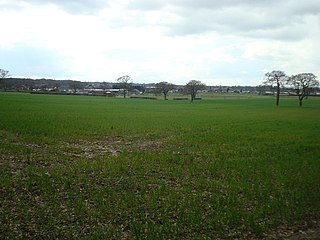
Bromley Common is the area of south-east London, within the London Borough of Bromley, Greater London. Prior to 1965 it was within the historic county of Kent. It lies south of Bromley town centre and Bickley, west of Southborough and Petts Wood, north of Locksbottom and Keston, and east of Hayes.

Southborough is an area of South East London, within the London Borough of Bromley, Greater London. Prior to 1965 it was within the historic county of Kent. It is located south of Bickley and Bromley, east of Bromley Common, north of Locksbottom, and west of Petts Wood.
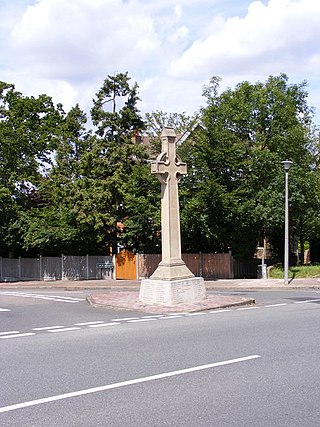
Shortlands is a suburb of South East London, England, within the London Borough of Bromley. It has been part of Greater London since 1965, and was previously part of the historic county of Kent. It is located between Beckenham and Bromley, to the north of Park Langley.

Locksbottom is a suburb of south-east London within the London Borough of Bromley, Greater London. Prior to 1965 it was within the historic county of Kent. It is located south of Bromley Common, west of Crofton, north-west of Farnborough, and east of Keston.
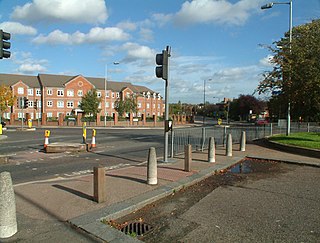
Chinbrook is an area of south east London, England, located 14 km (8.7 mi) southeast of Charing Cross in the London Borough of Lewisham. Chinbrook lies between Grove Park and Mottingham, approximately half a mile east of Grove Park centre and is generally considered part of Grove Park.

Green Street Green an area in south-east London, located in the London Borough of Bromley and, prior to 1965, in the historic county of Kent. It is located south of Orpington, west of Chelsfield, north-west of Pratt's Bottom, north of Hazelwood, and south east of Farnborough.
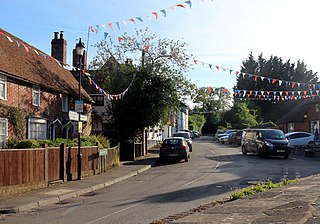
Chelsfield is an area in south-east London, England, within the London Borough of Bromley and, prior to 1965, in the historic county of Kent. It lies south of Goddington, west of Well Hill, north of Pratt's Bottom and east of Green Street Green. The area is split into two distinct areas – the historic 'village' section, and the newer development by the train station.

Idle is a residential suburban area in the city of Bradford, West Yorkshire, in England and was a separate village, and before that it was the Manor of Idle. Idle is loosely bordered by the areas of Eccleshill, Wrose, Thackley, Apperley Bridge, and Greengates, in the north-east of the city.

Sundridge Park, also known simply as Sundridge, is an area of Greater London within the London Borough of Bromley and prior to 1965 it was in the historic county of Kent. It is situated north of Bromley, north-west of Widmore and Bickley, south of Grove Park and south-east of Downham. In the twentieth century Sundridge names began to overlap somewhat with neighbouring Plaistow, for example, the main Sundridge shopping parade by the station sits directly east of Plaistow Green, with business and facilities in the area using the two names interchangeably, and Plaistow Cemetery is actually on the Sundridge side of the border. However, during the early twenty first century there have been deliberate attempts to re-establish the separate identities of both villages, Sundridge has its own village sign, and representation has been made to the local council for a village sign for Plaistow. Plaistow refers especially to the area north of Sundridge Park station along Burnt Ash Lane, part of the A2212 road which runs north to south between Grove Park and Bromley.
Ernest Newton was an English architect, President of Royal Institute of British Architects and founding member of the Art Workers' Guild.
Plaistow is an area of south-east London located in the London Borough of Bromley and, until 1965, in the historic county of Kent. It is located south of Downham and Grove Park and north of Sundridge Park and Bromley. Nowadays Plaistow overlaps somewhat with Sundridge, for example the main Sundridge Park shopping parade by the station sits directly east of Plaistow Green, with business and facilities in the area using the two names interchangeably. Plaistow now refers especially to the area north of Sundridge Park station along Burnt Ash Lane, part of the A2212 road which runs north to south between Grove Park and Bromley.

Elmers End is an area of south-east London, England, within the London Borough of Bromley, Greater London and formerly part of the historic county of Kent. It is located south of Beckenham, west of Eden Park, north of Monks Orchard and east of Anerley.
Spring Park is a small area in London, England. It is within the London Borough of Bromley and the London Borough of Croydon, straddling the traditional Kent-Surrey border along The Beck. Spring Park is located north of Addington, west of West Wickham and south of Monks Orchard and Shirley.